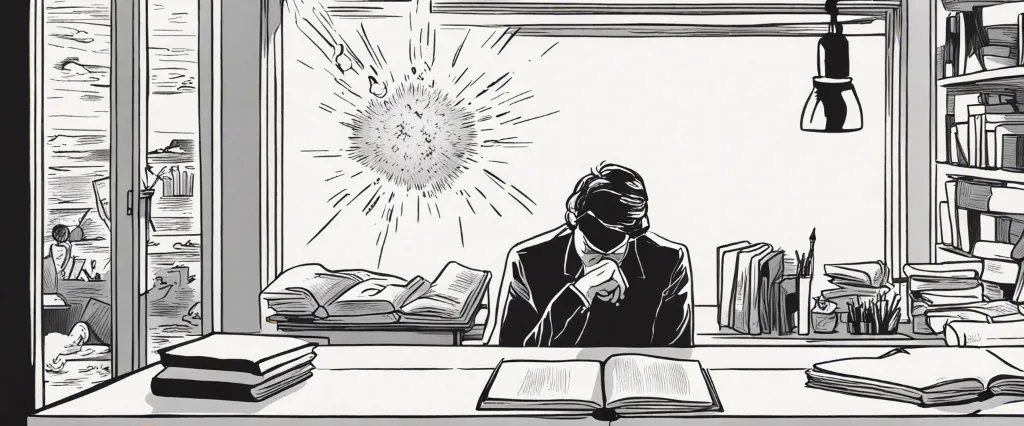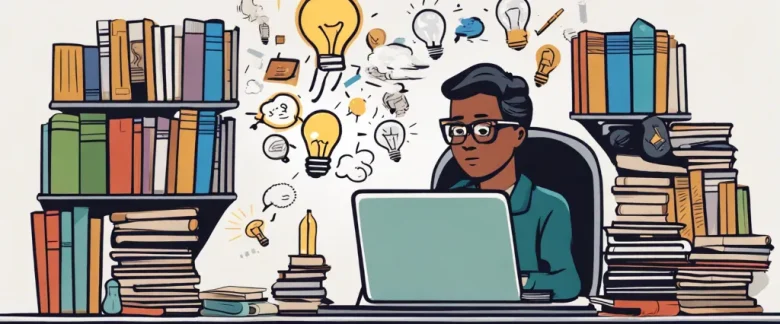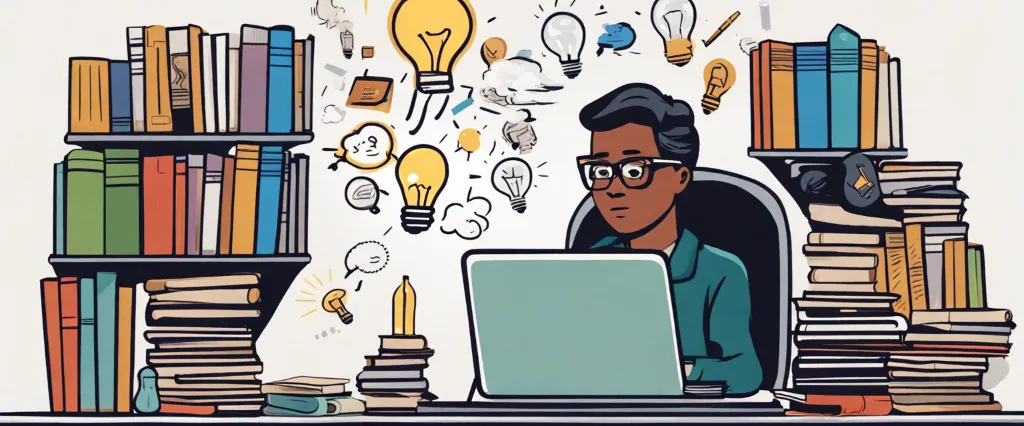In his insightful book, “The War of Art” author Steven Pressfield delves into the universal struggle faced by artists, writers, and creatives of all kinds: the battle against Resistance. Throughout the pages of this compelling work, Pressfield uncovers the internal and external forces that hinder the pursuit of artistic endeavors and offers practical wisdom on how to conquer them. With his extensive background as a successful novelist, screenwriter, and historian, Pressfield provides a unique perspective on the challenges faced by creative individuals, making “The War of Art” an indispensable guide for anyone seeking to overcome the obstacles that stand in the way of their creative potential.
The Resistance
The book highlights the various forms of resistance that individuals face when pursuing their artistic or professional endeavors, and provides insights and strategies to overcome this resistance.
Pressfield defines resistance as an internal force that prevents us from fulfilling our true purpose and potential. It manifests as self-doubt, procrastination, fear, and any other distractions that keep us away from doing the work that truly matters to us. Resistance is universal and affects all individuals, regardless of the profession or field they are in.
The author emphasizes that resistance is strongest when we are on the brink of achieving something meaningful. It thrives on our insecurities and feeds on our inner critic, leading us to sabotage ourselves and hinder our own progress. Pressfield emphasizes that resistance is not an external force, but an internal one that we must recognize and battle on a daily basis.
To overcome resistance, Pressfield emphasizes the importance of discipline and professionalism. He urges individuals to adopt a “warrior” mentality and commit to showing up and doing the work consistently, regardless of how we may feel. By embracing the practice of regular and intentional effort, individuals can break through the walls of resistance and tap into their true creative potential.
Combating Resistance
Pressfield defines resistance as an internal force that prevents us from achieving our goals, pursuing our passions, and fulfilling our potential. The book’s central theme is combating this resistance in order to overcome obstacles and achieve creative and personal success.
Pressfield uses examples and anecdotes from his own life as a writer to illustrate how resistance works and how it affects individuals in various fields. He emphasizes that resistance is universal and affects everyone who seeks to create, whether it be artists, entrepreneurs, or students. It can take the form of procrastination, self-doubt, fear of failure, or any other self-sabotaging behavior.
The author argues that resistance is not an external force but something within us that we must confront. He encourages readers to accept resistance as a natural part of the creative process and pushes them to develop discipline by consistently showing up and doing the work. By cultivating a professional mindset and treating their creative pursuits as a job, individuals can overcome resistance and achieve success.
Pressfield also explores the concept of the “higher self” or the “muse” – a source of inspiration and creativity that exists beyond the realm of resistance. He suggests that by tapping into this higher self and surrendering to the creative process, individuals can unlock their true potential and produce their best work.
The Creative Process
Pressfield identifies the primary enemy of creativity as Resistance, which he describes as an internal force that hinders individuals from achieving their creative potential. Resistance manifests in various forms, such as self-doubt, procrastination, and fear, and it is the primary obstacle that artists must overcome in order to fulfill their creative goals.
The book emphasizes the importance of discipline and consistency in creative pursuits. Pressfield depicts the professional artist as one who shows up every day, regardless of inspiration or external circumstances, and puts in the necessary work to overcome Resistance.
Pressfield also highlights the importance of embracing the idea of turning professional. He emphasizes the need to view creativity as a serious commitment, one that requires dedication, perseverance, and a professional mindset. By approaching their creative work with the same level of discipline and responsibility as any other job, artists can effectively combat Resistance and unleash their creative potential.
Furthermore, the book explores the concept of “flow” or the state of being fully immersed in one’s creative work. Pressfield suggests that by immersing ourselves completely in our creative endeavors without distractions, we can tap into a higher level of productivity and inspiration.
Professionalism and the Artist’s Journey

Pressfield argues that resistance is the primary obstacle that prevents artists from reaching their full potential, and that developing professionalism is essential to overcoming this resistance and achieving success.
According to the book, resistance refers to any internal or external force that hinders creative endeavors, such as procrastination, self-doubt, and fear of failure. Pressfield emphasizes that resistance is relentless and can manifest in various forms such as distractions, self-sabotage, and even rationalizations. He encourages artists to recognize resistance and understand that it’s an inherent part of the creative process.
To combat resistance, Pressfield emphasizes the importance of professionalism. Professionalism is about treating creativity seriously and committing wholeheartedly to the artistic journey. It requires regularity, discipline, and dedication to the craft. The author believes that adopting a professional mindset helps artists to overcome resistance and consistently produce high-quality work.
The book presents the artist’s journey as a battle against resistance. Pressfield compares it to a war, where the artist must continually fight and overcome various internal and external obstacles. He emphasizes the need for persistence and resilience, highlighting that true artists are those who persevere and stay committed, regardless of setbacks or challenges.
Pressfield also discusses the concept of inspiration, noting that it can be elusive and unreliable. He argues that the professional artist does not wait for inspiration to strike, but instead shows up every day and puts in the work whether feeling inspired or not. Through this consistent effort, creativity becomes a habit, rather than relying on sporadic bursts of inspiration.
It emphasizes the artist’s journey as a constant battle against various internal and external obstacles, while advocating for discipline, dedication, and persistence in pursuing artistic endeavors. The book ultimately aims to inspire artists to develop a professional mindset and embrace their creative calling wholeheartedly.
The Muse and Inspiration
The book discusses various aspects of the resistance, including procrastination, self-doubt, fear, and distractions. Pressfield emphasizes that resistance appears in different forms for each individual, but its purpose remains the same: to prevent artists from realizing their creative aspirations. He argues that resistance thrives on our insecurities and feeds on our fears, ultimately keeping us from taking the necessary steps to create meaningful work.
To combat the resistance, Pressfield suggests adopting a professional mindset. He highlights the importance of discipline, routine, and consistency in overcoming obstacles. By treating creativity as a job and showing up every day to work on it, artists can gradually chip away at the resistance and make progress.
Pressfield also explores the role of the muse and inspiration in creative endeavors. He believes that the artist’s duty is to show up and do the work, regardless of whether or not inspiration strikes. Waiting for the muse to appear is an excuse to avoid taking action, and true inspiration can only be found through dedicated effort.
By adopting a professional mindset, showing up consistently, and not relying solely on inspiration or the muse, Pressfield encourages creatives to confront their fears and pursue their artistic goals.
Overcoming Self-Doubt
He argues that self-doubt manifests as resistance and identifies it as a force that drives individuals away from their true calling.
The author divides his book into three distinctive parts. Firstly, he explores the concept of resistance, describing it as an internal force that opposes any meaningful creative endeavor. Pressfield emphasizes that resistance operates by fueling self-doubt and excuses, preventing individuals from pursuing their passions.
In the second part, Pressfield delves into the qualities and behaviors required to overcome resistance. He encourages the need for discipline, perseverance, and a professional mindset regarding one’s chosen field. Pressfield advocates for adopting a consistent work ethic, showing up regularly to combat resistance and self-doubt.
Lastly, the author presents the idea of turning professional. By embracing professionalism, one can vanquish self-doubt and resistance. Pressfield emphasizes the importance of committing and getting to work wholeheartedly, regardless of the outcome. He argues that by adopting a professional attitude towards one’s craft, individuals can overcome self-doubt and ultimately achieve success.
Pressfield offers practical advice, urging readers to recognize resistance, cultivate discipline, and develop a professional mindset. By following these principles and taking action, individuals can conquer self-doubt and unleash their full creative potential.
Resistance and Fear
It takes various forms such as procrastination, self-doubt, and distraction. Resistance is an enemy to creativity and personal growth.
Fear, another central theme in the book, is closely related to resistance. Pressfield discusses fear as the root cause of resistance, which manifests as a negative force that prevents us from taking risks and embracing our passions. Fear of failure, judgment, and the unknown stifles innovation and prompts us to play it safe, leading to a life filled with regrets.
Pressfield emphasizes the importance of recognizing resistance and fear in our lives and managing them to achieve our creative aspirations. He stresses the need for discipline, perseverance, and commitment to overcome resistance. By creating routines, setting goals, and maintaining a strong work ethic, individuals can combat resistance and tap into their creative potential.
Through anecdotes, practical advice, and powerful insights, Pressfield motivates readers to break through their resistance and unlock their true creative potential.

The Artist’s Journey
Pressfield begins by emphasizing the importance of recognizing and battling Resistance, which he defines as the force that stands between the artist and the act of creation. Resistance can manifest in various forms, such as procrastination, self-doubt, or fear of failure. The Artist’s Journey involves recognizing Resistance and finding ways to overcome it.
Pressfield introduces the idea of the “Shadow Career,” which refers to pursuing a profession that is not one’s true calling, often as a means of avoiding the inherent challenges and risks of fully embarking on the creative journey. He encourages artists to honestly identify if they are pursuing their true passions or engaging in a substitute that ultimately leaves them unfulfilled.
In addition, Pressfield highlights the importance of developing discipline and routine in the creative process. He argues that habits and rituals create a framework that enables artists to push through Resistance and maintain consistent progress.
The Artist’s Journey is also described as a process of self-discovery and personal transformation. It involves confronting one’s fears, embracing vulnerability, and acknowledging the wounds and traumas that have shaped the artist’s identity and creative expression.
After Reading
In conclusion, The War of Art by Steven Pressfield is a powerful and insightful book that delves into the struggles artists face in accomplishing their creative endeavors. Pressfield emphasizes the importance of overcoming resistance and embracing the professional mindset to conquer self-doubt, procrastination, and fear. The book serves as a guide for artists of all forms, providing practical advice and motivation to fight against the forces that hinder creative expression. By outlining the different forms of resistance and offering various strategies to combat them, Pressfield empowers readers to break free from the shackles of their own self-imposed limitations and unleash their true creative potential. Overall, The War of Art serves as a rallying call to not just artists, but to anyone seeking to achieve their goals and make a meaningful impact in their chosen field.
1. How To Read A Book” by Mortimer J. Adler: This book is an essential guide for anyone looking to improve their reading comprehension and interpretation skills. Adler provides valuable techniques and practical advice on how to read various types of books effectively. Whether you are a student, a professional, or just an avid reader, this book will help you get more out of your reading and enhance your overall learning experience.
2. The 48 Laws of Power” by Robert Greene: After reading “The War of Art,” diving into “The 48 Laws of Power” will offer a fascinating exploration of the principles behind gaining and maintaining power in various settings. Greene presents historical examples, anecdotes, and psychological insights to teach readers how to navigate power dynamics and achieve their goals. This eye-opening book offers a fresh perspective on human interactions and strategies to maneuver through complex social situations.
3. The Richest Man in Babylon” by George S. Clason: As you delve into the concepts of overcoming resistance discussed in “The War of Art,” “The Richest Man in Babylon” complements those ideas by highlighting the importance of financial discipline and wealth creation. Clason masterfully imparts financial wisdom through engaging parables set in ancient Babylon. The book provides valuable lessons in personal finance, including saving, investing, and budgeting, that are still relevant today.
4. Sapiens: A Brief History of Humankind” by Yuval Noah Harari: Building on the themes of self-improvement and personal development from “The War of Art,” “Sapiens” offers a captivating journey through the history of our species. Harari takes readers on a thought-provoking exploration of the key milestones that shaped human civilization, addressing questions of human nature, culture, and the impact of technological advancements. This enlightening book encourages reflection on the human condition and helps broaden our perspective.
5. Man’s Search for Meaning” by Viktor E. Frankl: After reading about the struggle against resistance in “The War of Art,” “Man’s Search for Meaning” takes you on a profound journey through the Holocaust survivor Viktor Frankl’s experiences in Nazi concentration camps. Frankl’s book is a testament to the power of finding meaning and purpose in life, even in the face of unimaginable hardships. It offers invaluable insights into human resilience, the search for existential meaning, and the determination to overcome adversity.




